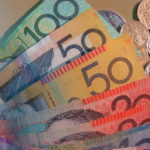Gold slid on Thursday to trade below a five-month high amid stronger Asian equities and ahead of the European Central Banks announcement on a stimulus program.
Comex gold for delivery in February fell 0.63% to $1 285.6 per troy ounce by 08:34 GMT, shifting in a daily range of $1 283.3 – $1 293.9. The precious metal settled 0.04% lower on Wednesday, but not before it jumped to $1 307.0, its highest since August 15.
The ECB is widely expected to introduce a large bond-buying program, hurting the already weak euro which is trading close to an 11-year low against the US dollar. The stimulus measures would be aimed at fighting deflation and reviving the European economy.
According to central-bank officials, President Mario Draghi has suggested purchasing €50 billion worth of assets every month through December 2016.
The possible launch of a stimulus program is likely to boost gold prices, however, analysts have suggested that gold has already factored in the decision, citing yesterdays new high.
“Increased liquidity in the euro-region is set to boost the prices of gold, as the precious metal may enjoy fund inflows from hot money coursing through Europe,” said Howie Lee, investment analyst at Phillip Futures, cited by CNBC.
Asian equities edged up on Thursday to trade close to a eight-week highs, capping gold gains, as investors were optimistic about the effectiveness of an eventual quantitative easing program in Europe.
Gold has enjoyed plenty of safe-haven bids lately due to the International Monetary Funds decision to cut its projection on global growth and economic uncertainties in Europe, spurred ahead of Greeces elections.
The IMF reduced its forecast for global expansion for 2015 and 2016, with 0.3% for both years to 3.5% and 3.7% respectively. Meanwhile, increasing speculations that Greece will be the first country to leave the Eurozone have pushed investors towards the safety of the yellow metal.
Greeces Syriza party, which is widely expected to win at the elections scheduled on January 25, has promised to wipe-out the majority of the countrys debt, while also leading the nation out of the 19-member group.
Meanwhile, physical demand for the metal has decreased in India, the worlds second-biggest gold consumer after China, ahead of a possible reduction in the import duty. Gold was traded at discounts of up to $16 an ounce compared to London prices, the widest in 17 months.
Assets in the SPDR Gold Trust, the biggest bullion-backed ETF, fell 1.79 tons on Wednesday to 740.45 tons. Changes in holdings typically move gold prices in the same direction.
The US dollar index for settlement in March was down 0.05% at 93.090 at 08:42 GMT, holding in a daily range of 93.250-92.960. The US currency gauge lost 0.22% on Wednesday to 93.140. A stronger greenback makes dollar-denominated commodities more expensive for holders of foreign currencies and curbs their appeal as an alternative investment, and vice versa.
Pivot Points
According to Binary Tribune’s daily analysis, February gold’s central pivot point on the Comex stands at $1 295.1. If the contract breaks its first resistance level at $1 305.6, next barrier will be at $1 317.5. In case the second key resistance is broken, the precious metal may attempt to advance to $1 328.0.
If the contract manages to breach the S1 level at $1 283.2, it will next see support at $1 272.7. With this second key support broken, movement to the downside may extend to $1 260.8.





